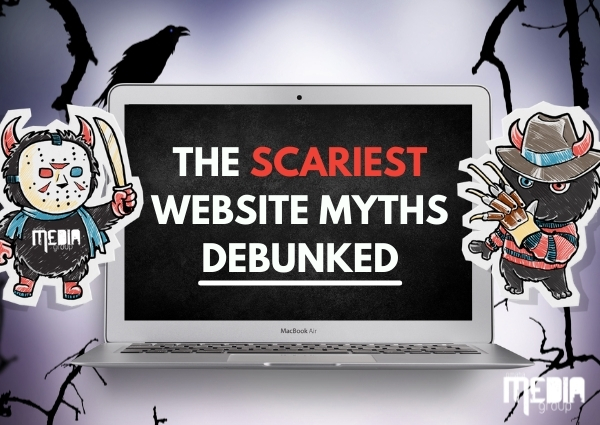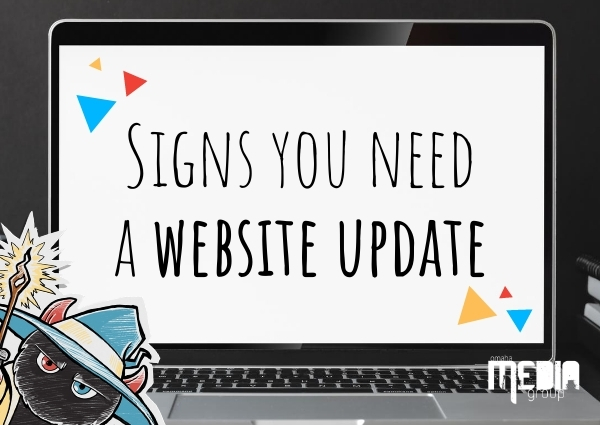 https://www.omahamediagroup.com/images/uploads/monster_gallery/Omaha-Media-Group-Black.jpg
admin
https://www.omahamediagroup.com/images/uploads/monster_gallery/Omaha-Media-Group-Black.jpg
admin
The scariest website myths debunked

There are millions of articles out there speaking about the top website tips or suggestions, but the thing with the internet is that not all information is true. With a handful of clients coming to us from old agencies or companies, there are plenty of myths our team has had to debunk.
These are five website myths that our experts want to debunk for good!
1. Once it is live, the visitors will come
The new website is live, congratulations! As a creative management firm, we understand that this is one of the most pivotal elements of a company’s digital strategy. However, one of the biggest website myths is that once the website is live, the visitors will start to funnel in.
Fact: You have to build a strategy that makes consumers want to come to your website
This is an old-school approach that still permeates the digital marketing industry. This is one of the hardest myths to debunk for clients.
The old saying goes, “build it and they will come” but that isn’t the case in our digital landscape.
A brand new website has to be authoritative and credible with consumers and search engines alike, and even for websites with years of experience, rebranding and changing all or some of the website structure can mean having to build it back up.
An established website that decides to rebrand and change its entire website will be seen in Google’s eyes as a brand new website, and with this in mind, you’ll need to continue with the strategy that was set in place.
2. I’ll rank right away
This is one of the website myths that can be detrimental to a company’s online presence. Any company that participates in SEO that goes against Google Guidelines consistently can find itself slowly falling down in any ranking or being blacklisted from Google.
While being blacklisted from Google takes a serious amount of time, it can happen. Once upon a time, a company could launch a website and rank, possibly. However, circa 2010 when Google changed its search engine with some of the largest core updates, this is no longer the case.
Fact: It is a marathon to rank in any search engine
It can take six months, at minimum, to gain any traction of ranking in search engines. The average time our experts tell clients is between six to nine months of consistent work for it to start showing some small improvements.
While there are cases of clients ranking quicker than others, for the most part, this is the typical timeline.
It depends on a multitude of factors in place ranging from the competitiveness of the industry itself to how established the website is. On top of that, Google has produced some of the largest updates since 2010 within the last couple of years which changes SERP itself.
3. Once it is live, it is finished
When you build a website, that is only the beginning. While most understand that the website is the hub that brings all digital strategies together in one central place, this hub needs maintenance and ongoing attention.
Fact: A website is never really finished
A website is never finished. Let us repeat that, a website is never finished. From ongoing SEO maintenance and updates to website maintenance and everything else in-between, a website is never complete!
4. Accessibility means it is mobile friendly
Accessibility and mobile-friendliness do not go hand in hand! Accessibility is the ability for anyone to easily navigate your website with a physical or mental impairment or disability.
Fact: Accessibility allows everyone to search on the internet
Usability.gov states, “accessibility focuses on how a disabled person accesses or benefits from a site, system or application.”
These are a few of the necessities of accessibility:
Accessible content
Keyboard navigation abilities
Alt tags/ text
Headings
Larger CTA buttons
Color contrast
Magnification option for text
A mobile-friendly website is a responsive website that allows for the website to reformat based on any device it is viewed on. A mobile-friendly website is just as important as an accessible website, but these two notions are not the same!
5. A good design will last forever
When was the last time that your website was updated? Not sure? Yes, even if the website is still functioning, it doesn’t mean that it is functional. A great example is with accessibility above. Is your website built for that?
If you are unsure about these questions, then it is time to call for a website redesign and development project.
Fact: Good design has a shelf-life
Research shows that a website has a shelf life of two years and seven months. While small changes and updates can help a website to maintain its shelf life, with massive updates in Google and the digital world, it will only last for so long before a redesign and development project is needed.
A website design from even a year and a half ago could be outdated. This is because Google is constantly creating new standards for its Google Development Partners to follow, improving its search engine, and continuing to keep consumers happy and engaged.
With these new search standards and updates, it is imperative that companies understand that this last website myth is one that needs to be evaluated at least every two years.
Let us help you with your website redesign and development project! Contact us today!
Hire the team to help you with your website, app, or other marketing needs.
We have a team of digital marketers who can help plan and bring to life all your digital marketing strategies. They can help with social media marketing, email marketing, and digital advertising!
CONTACT US



Comments